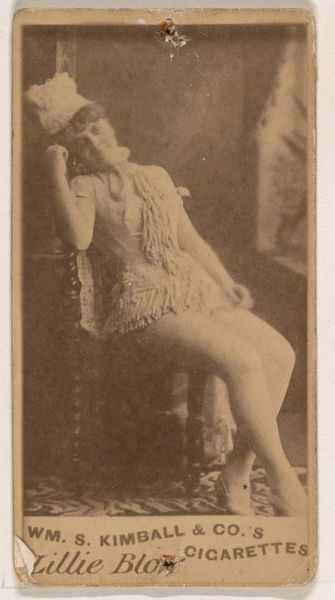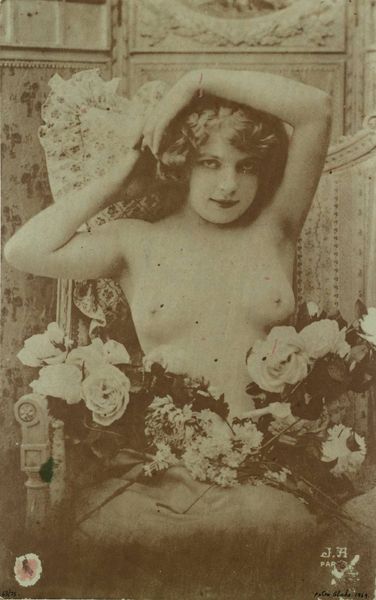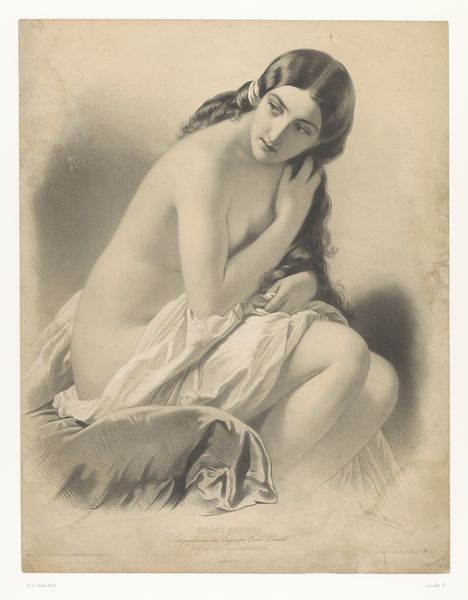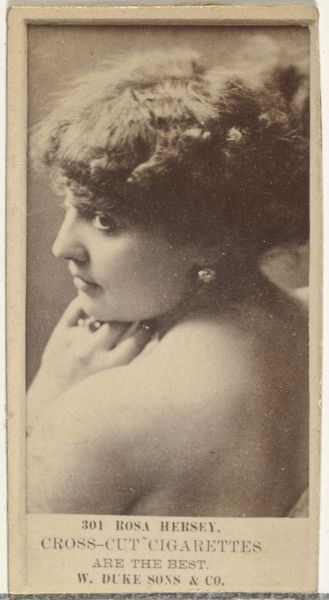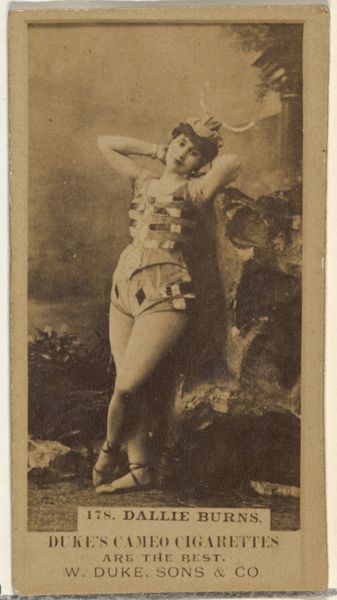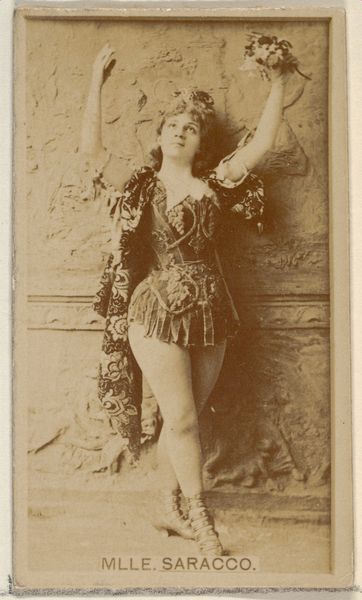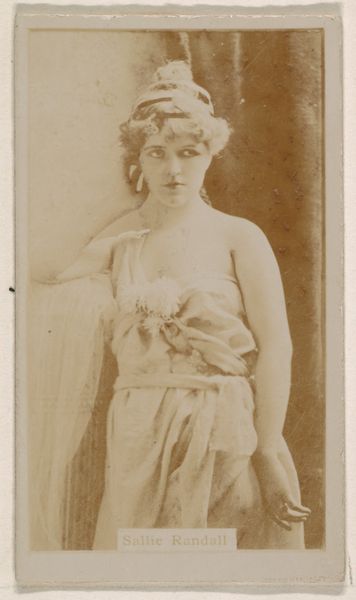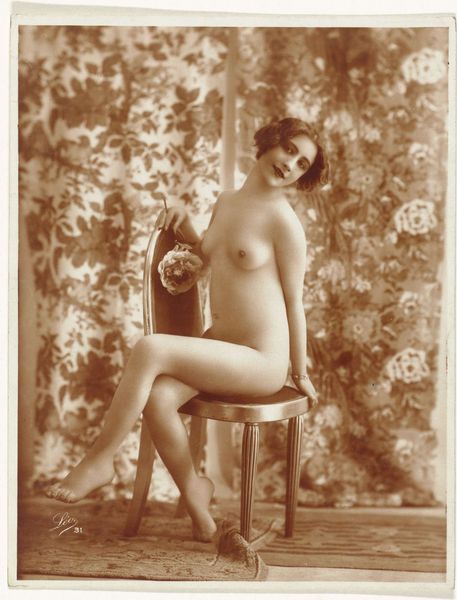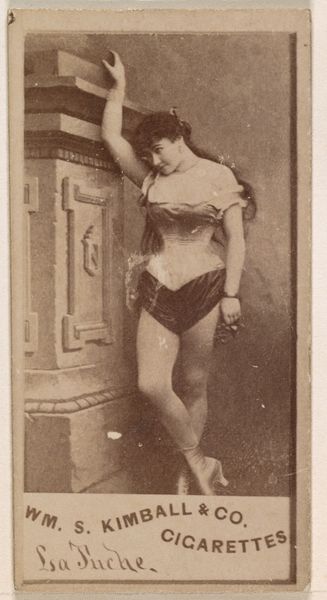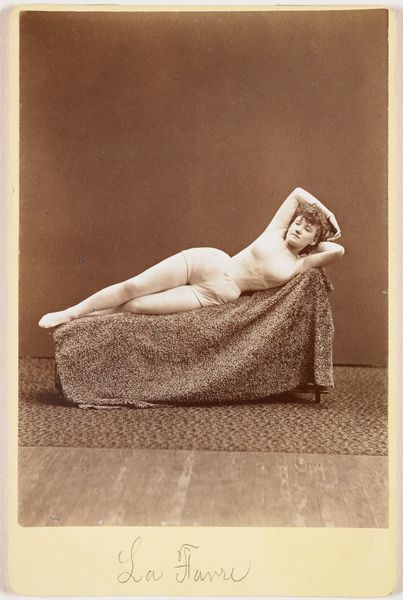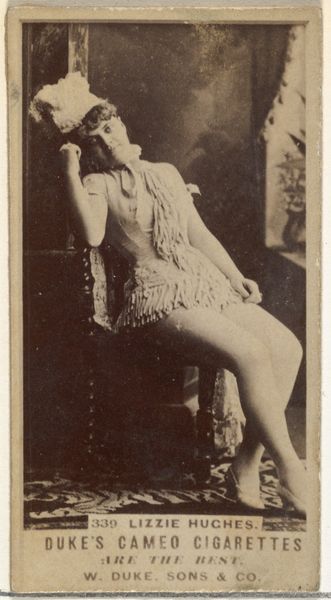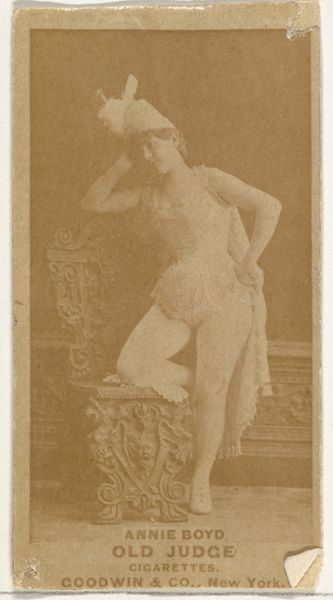
photography
#
pictorialism
#
charcoal drawing
#
photography
#
portrait reference
#
yellow element
#
feminine portrait
#
nude
#
erotic-art
Dimensions: height 226 mm, width 178 mm
Copyright: Rijks Museum: Open Domain
Editor: So, this is "Vrouwelijk naakt met sluier," or "Female Nude with Veil," dating roughly between 1900 and 1920, by an artist known only as Léo. It's a photograph with a warm, almost sepia tone that gives it this soft, dreamlike quality. How would you interpret a piece like this in its historical context? Curator: It's important to remember that during this period, photography was still establishing itself as a legitimate art form. Pictorialism, the style we see here, directly countered the notion of photography as purely documentary. These photographers consciously manipulated their images through printing processes and soft focus to mimic the look of paintings, directly engaging with art world hierarchies of the time. The presentation of the nude figure here also pulls from established art-historical conventions of representing the female form, yet simultaneously subverts them through the use of the photographic medium. It provokes a conversation: does photography liberate or reify established views on gender, the gaze, and eroticism? Editor: That's fascinating. I hadn't really considered how photography itself was making a statement. So, the "art" isn't just the image, but the medium too. Curator: Precisely. Also consider the viewer. This wasn’t simply a private photograph, but an image intended for public consumption, displayed and circulated through artistic circles. The success or failure of such an image, its critical reception, hinged not just on the figure depicted, but on how it pushed the boundaries of what photography could and should be at that specific historical juncture. Editor: I see...It makes you think about how artistic movements aren’t created in vacuums; they’re commenting on the world around them, and the history that came before them. Thanks, this has been so insightful! Curator: My pleasure. Reflecting on the social lives of images is vital to understanding art.
Comments
No comments
Be the first to comment and join the conversation on the ultimate creative platform.

